More macro photographs
These shots were all taken with my simple home made macro photo lens and a cheap digital camera.
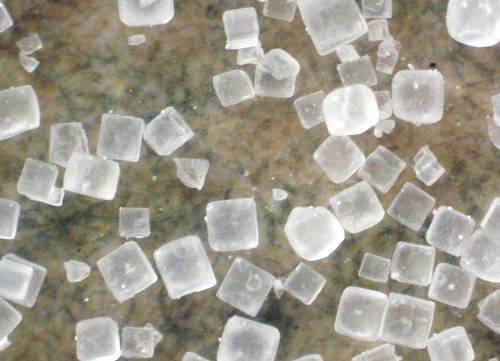 Grains of salt. They really are cubes.
Grains of salt. They really are cubes.
The first bit of salt I photographed had cubes that were all distorted, but another sample of
salt had some much nicer cubes.
 Fabric of a pair of jeans. This is the inside fabric of the jeans. The multi coloured threads
look more interesting than the outside.
Fabric of a pair of jeans. This is the inside fabric of the jeans. The multi coloured threads
look more interesting than the outside.
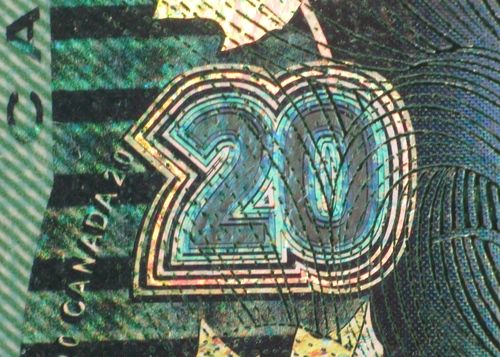 This "20" is part of the security strip down the left side of a Canadian $20 bill.
The 20 is about five millimeters wide.
This "20" is part of the security strip down the left side of a Canadian $20 bill.
The 20 is about five millimeters wide.
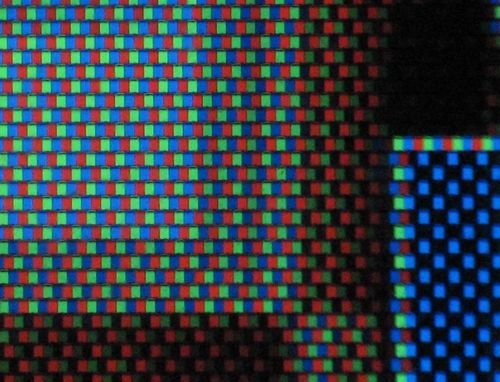 The display of one of my digital cameras. It's interesting how alternate rows are offset by
half a column. That way, pixels of the same colour form more of a hexagon pattern - see blue
on the bottom right. I guess the pixels are less noticeable this way than the vertical rows
that are used on a normal monitor. And with only the camera's software having to deal with the display,
I guess it's OK to have a bit of an odd arrangement of the pixels.
The display of one of my digital cameras. It's interesting how alternate rows are offset by
half a column. That way, pixels of the same colour form more of a hexagon pattern - see blue
on the bottom right. I guess the pixels are less noticeable this way than the vertical rows
that are used on a normal monitor. And with only the camera's software having to deal with the display,
I guess it's OK to have a bit of an odd arrangement of the pixels.
 One eighth-watt thru-hole resistors. My depth off field wasn't quite enough to cover
both the resistor body and the leads. The image is about 2 cm wide, which is about as far out
as I can zoom and focus with my macro lens arrangement.
One eighth-watt thru-hole resistors. My depth off field wasn't quite enough to cover
both the resistor body and the leads. The image is about 2 cm wide, which is about as far out
as I can zoom and focus with my macro lens arrangement.
 Pins and needles. The pins remind me of large framing nails on this photo.
Pins and needles. The pins remind me of large framing nails on this photo.
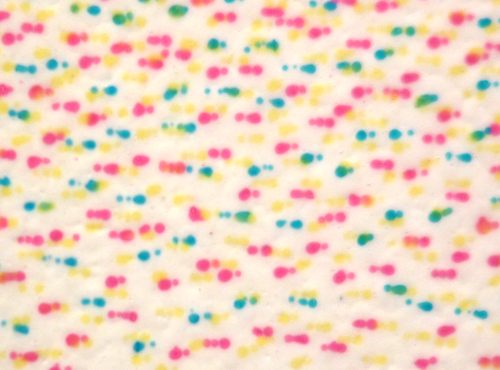 Ink jet dots on photo paper. This image is 2 mm across. Its from a light area of the image with
no details.
Ink jet dots on photo paper. This image is 2 mm across. Its from a light area of the image with
no details.
I like how the ink dots all look like footprints
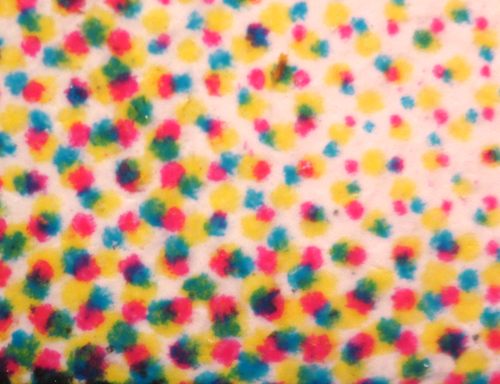 Colour dots from a glossy magazine page. This image is 2 mm across.
The dots are a fair bit coraser than the dots from the ink jet dots on photo paper. But then
again, the ink jet printer can print phtos a little sharper than a glossy magazine.
Colour dots from a glossy magazine page. This image is 2 mm across.
The dots are a fair bit coraser than the dots from the ink jet dots on photo paper. But then
again, the ink jet printer can print phtos a little sharper than a glossy magazine.
It's neat how you can see how the cyan magenta and yellow mix wherever the
dots overlap.
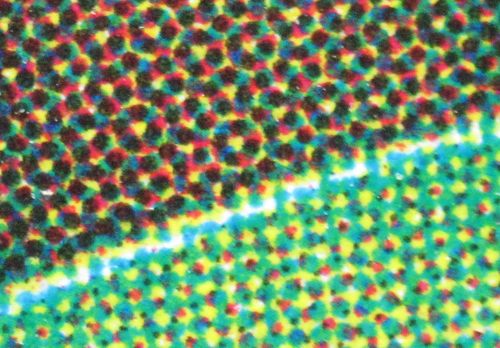 Another part of the same page as the previous photo, but with less magnification.
It's neat how the grids of dots at different angles form interesting patterns.
Another part of the same page as the previous photo, but with less magnification.
It's neat how the grids of dots at different angles form interesting patterns.
This image adds a fourth layer of black dots on top of the cyan, magenta and yellow dots. Black is
used in addition to cyan, magenta, and yellow to get deeper blacks. Ink jet printers do the same
thing on regular paper, though on photo paper, they seem to rely on just cyan, magenta, and yellow.
 The edges of the pages of a new book. The cleaner pages in the middle are colour picture pages.
They seem to be made of a different paper. I suspect the pages were extremely dry at the time
of printing and have expanded a little since then, but less so for the waxy glossy pages. That
would explain why they appear to be recessed with respect to the normal paper pages.
The edges of the pages of a new book. The cleaner pages in the middle are colour picture pages.
They seem to be made of a different paper. I suspect the pages were extremely dry at the time
of printing and have expanded a little since then, but less so for the waxy glossy pages. That
would explain why they appear to be recessed with respect to the normal paper pages.
More on my Macro photography setup